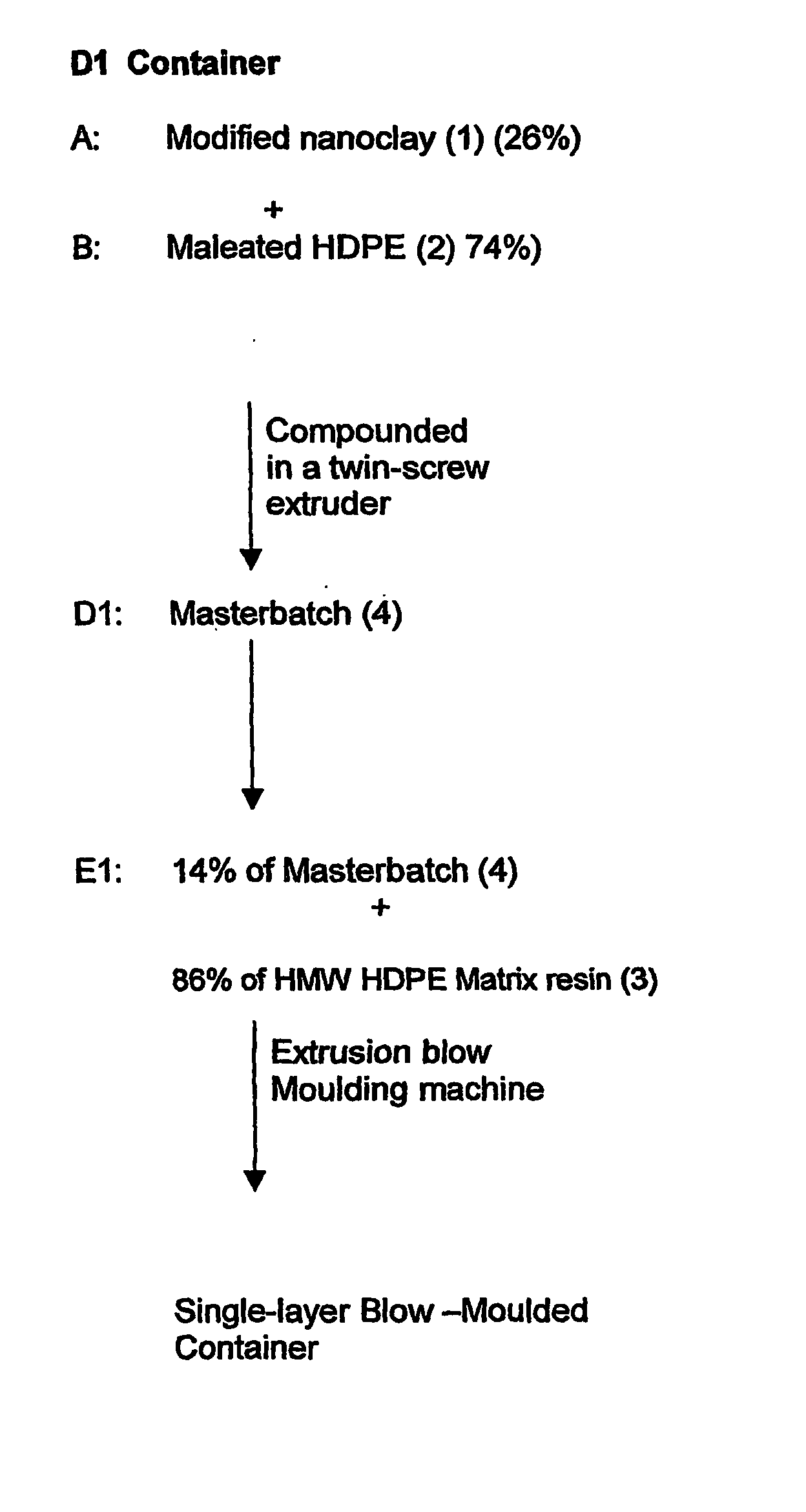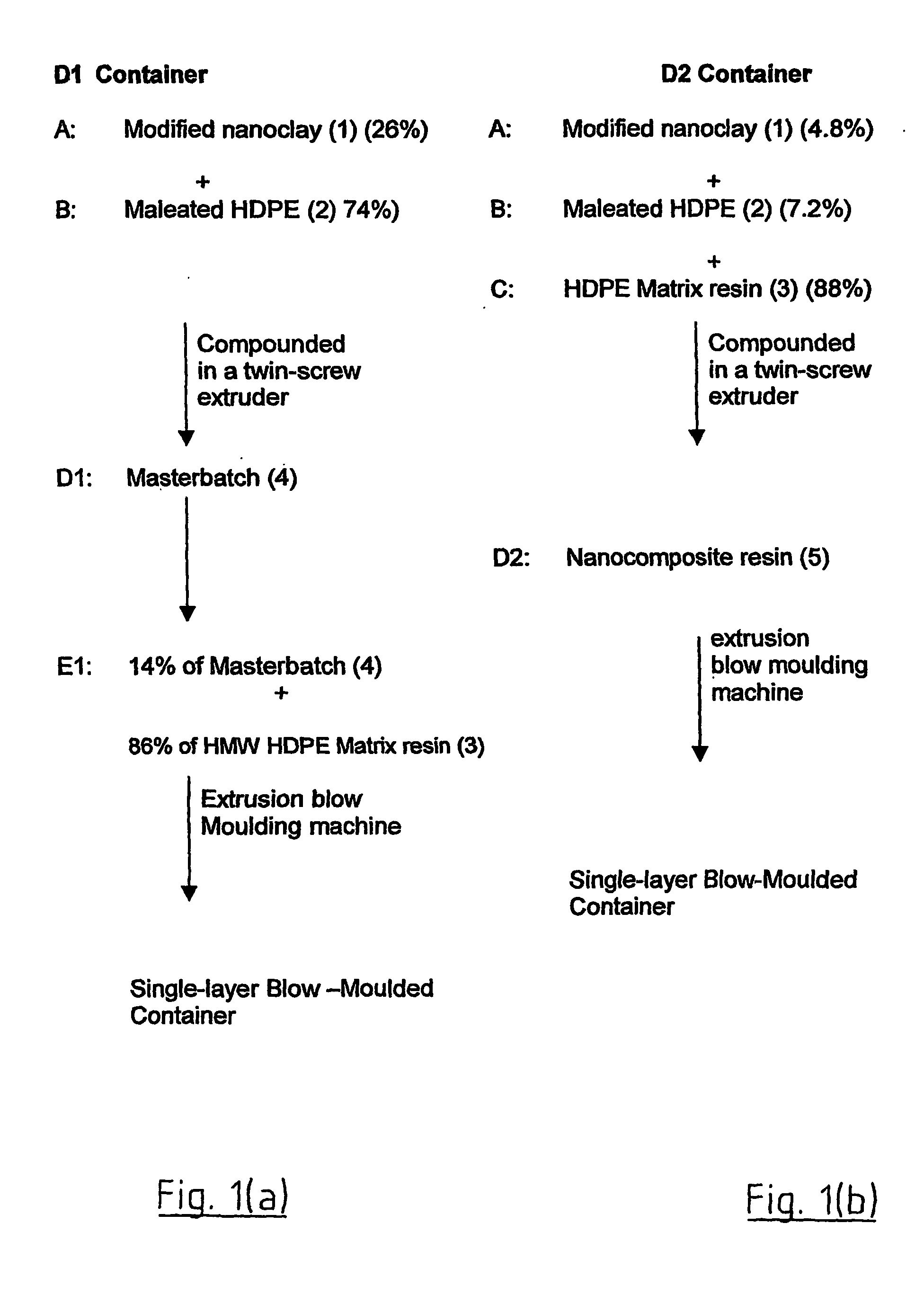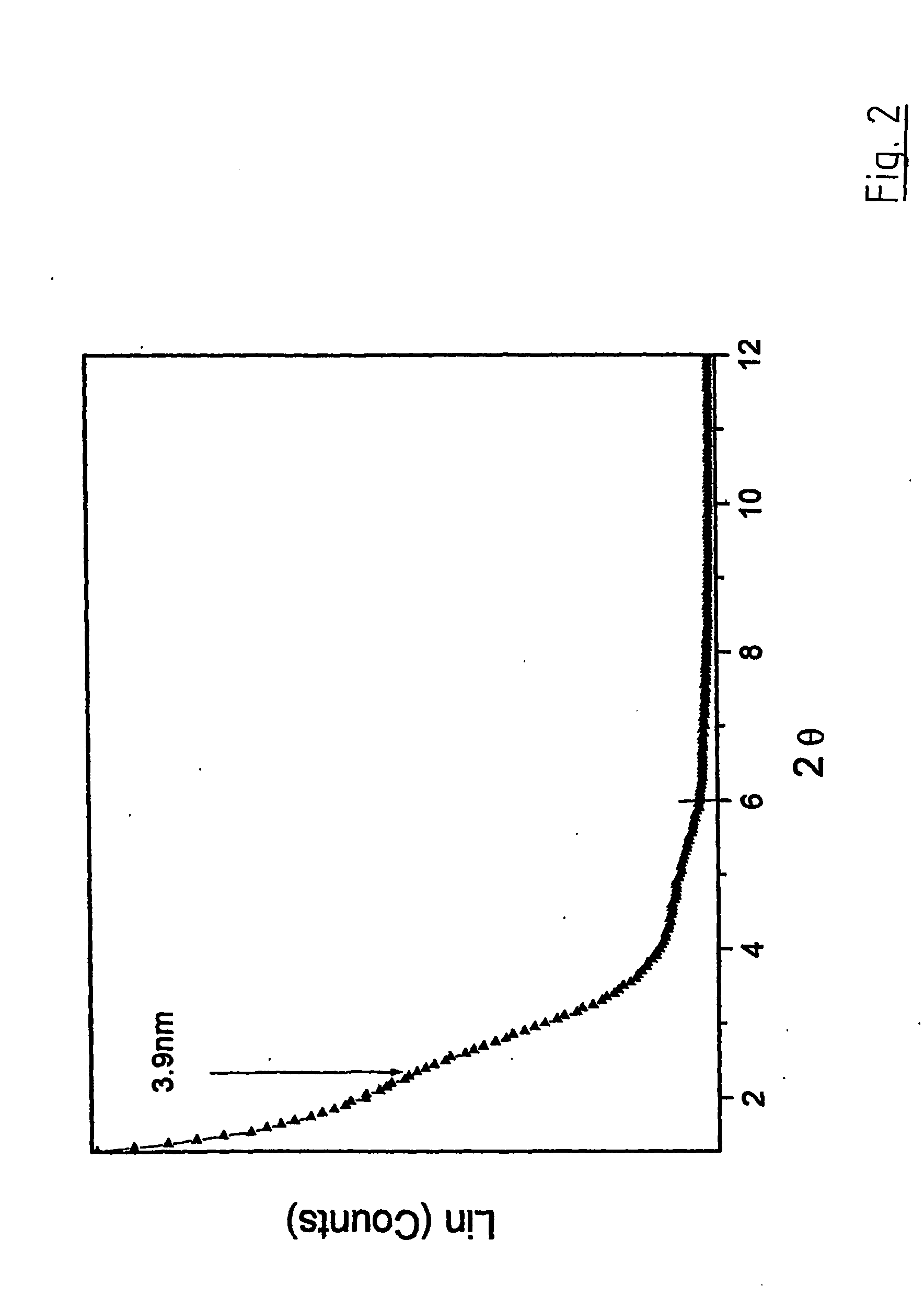Process for producing a performance enhanced single-layer blow-moulded container
a technology of blow-moulding and singelayer, which is applied in the direction of containers, rigid containers, applications, etc., can solve the problems of limiting the application of storage of hydrocarbon solvents and fuels, affecting the quality of the product, so as to achieve the effect of reducing the cost of moulding, reducing the cost of production, and increasing the barrier and mechanical properties
- Summary
- Abstract
- Description
- Claims
- Application Information
AI Technical Summary
Benefits of technology
Problems solved by technology
Method used
Image
Examples
example 1
Mechanical Properties (D1 Masterbatch and Injection Moulded Testpieces)
[0065] Standard Rigidex HM5420XP HDPE was supplied by BP Solvay
[0066] Melt Flow index=2 g / 10 min (190° C. / 21.6 kg)
[0067] Treated nanoclay was sourced from Nanocor Inc. (organically modified by cation exchange with an alkyl ammonium ion.)
[0068] Commercially available maleated HDPE was sourced from DuPont.
[0069] Nanoclay (1) maleated HDPE (2) were compounded in a twin screw extruder to produce a masterbatch (4) having a melt index of 2.6 ccm / 10 min at 21.6 kg load with a nanoclay concentration of 26% and a maleated HDPE concentration of 74% by weight of the masterbatch. The masterbatch was found to have a viscosity of 1610 Pa·s at a shear rate of 100 1 / s.
[0070] As illustrated in FIG. 2 there was a strong interaction between the maleated HDPE and the nanoclay. The initial interlayer distance of the nanoclay used was 2.6 nm. By means of X-ray diffraction it was determined that the nanoclay was intercalated.
In...
example 2
D1 Container
[0073] Rigidex HM5030XP HDPE was supplied by BP Solvay
[0074] Melt Flow index=3 g / 10 min (190° C. / 21.6 kg)
[0075] Treated nanoclay was sourced from Nanocor Inc. (organically modified by cation exchange with an alkyl ammonium ion).
[0076] Commercially available maleated HDPE was sourced from DuPont.
[0077] Masterbatch (4) was prepared in a twin screw extruder as in Example 1. 14% of masterbatch was added to 86% of Rigidex HM5030XP HDPE matrix resin. The processing conditions are defined as follows:
[0078] Extruder Temperatures: 170, 180, 180, 185, 190° C.
[0079] Melt temperature: 190° C.
Coloured Container
[0080] A blow-moulded container was produced using the masterbatch (4) (13% by weight), having a melt index of 2 ccm / 10 min at 21.6 kg load (190° C.), masterbatch colour Blue 5010 (2% by weight), and HDPE (85% by weight) (having a melt index of 3 g / 10 min 21.6 kg load (190° C.)) which are mixed in the blow-moulding machine. The viscosity ratio was ηMB / ηPE=0.78 at a te...
example 3
Thermo-Mechanical Properties (D1 Container)
Heat Deflection Temperature Test (HDT Test)
[0090] According to the ASTM D648 Standard the minimal sample thickness for this test should be 2.4 mm and the temperature at which the test bar deflects 0.50 mm is obtained. Heat deflection temperature (HDT) was measured on samples cut from the blow moulded containers. Due to the container wall thickness available, the thickness of some samples is less than 2.4 mm, but all samples are extrapolated for the minimum thickness of 2.4 mm. The samples thickness was 1.95 mm for the reference sample and 2.4 mm for the nanocomposite container.
[0091] The HDT results are presented in Table 4. for calculated 2.4 mm thickness
TABLE 4Heat deflection temperature Test. (D1 Container)HDT @ 1.82SampleMPa [° C.]Standard (Rigidex 5030XP HDPE)36Example 3, D1 blue (coloured blow-moulded container)42
[0092] It can be concluded that the containers produced from the D1 masterbatch material show improved mechanical the...
PUM
| Property | Measurement | Unit |
|---|---|---|
| temperature | aaaaa | aaaaa |
| temperature | aaaaa | aaaaa |
| melt index | aaaaa | aaaaa |
Abstract
Description
Claims
Application Information
 Login to View More
Login to View More - R&D
- Intellectual Property
- Life Sciences
- Materials
- Tech Scout
- Unparalleled Data Quality
- Higher Quality Content
- 60% Fewer Hallucinations
Browse by: Latest US Patents, China's latest patents, Technical Efficacy Thesaurus, Application Domain, Technology Topic, Popular Technical Reports.
© 2025 PatSnap. All rights reserved.Legal|Privacy policy|Modern Slavery Act Transparency Statement|Sitemap|About US| Contact US: help@patsnap.com



